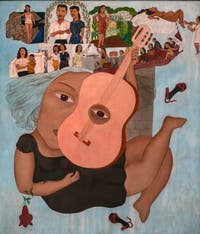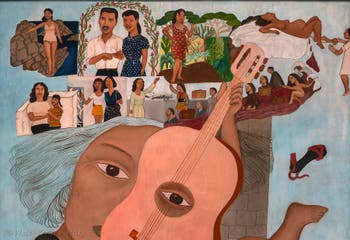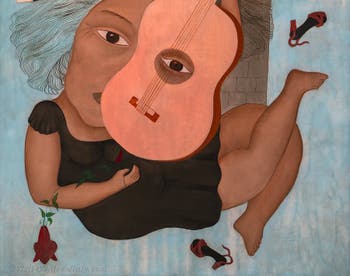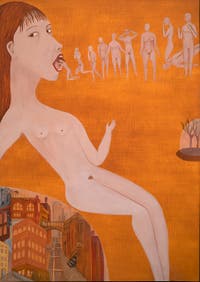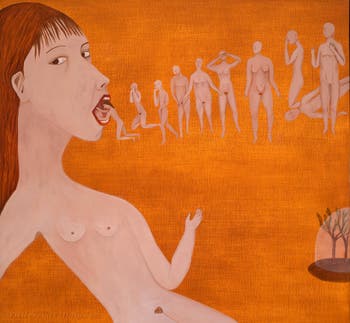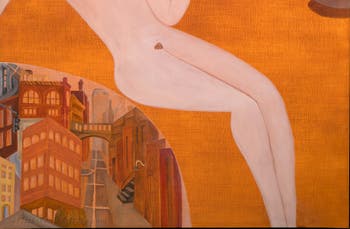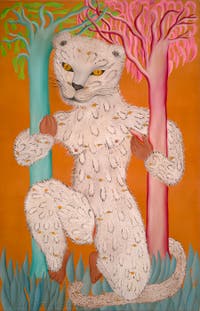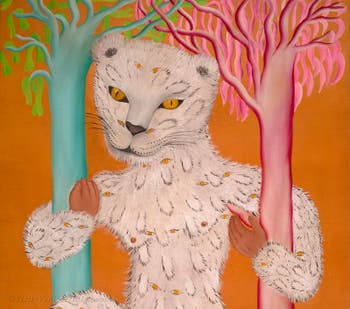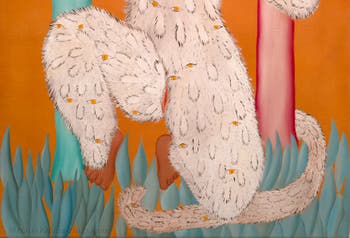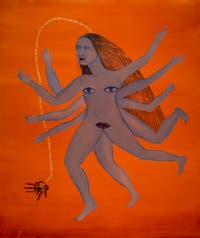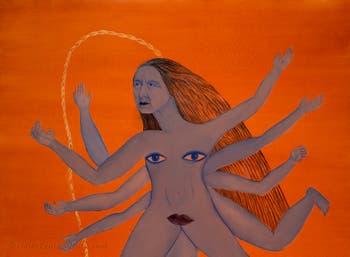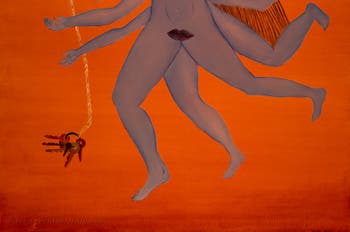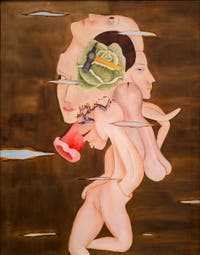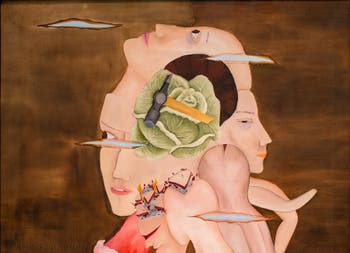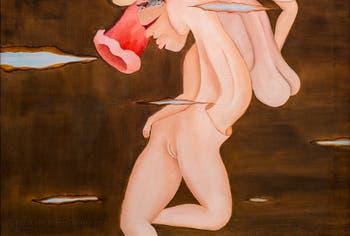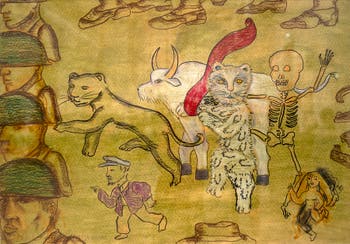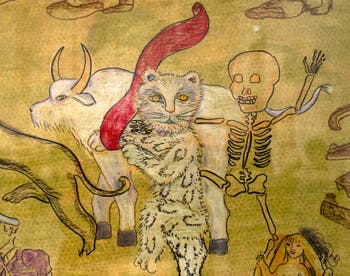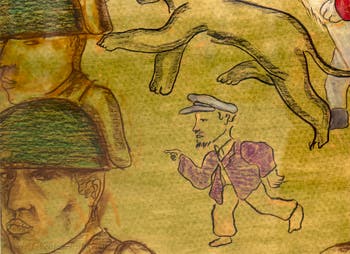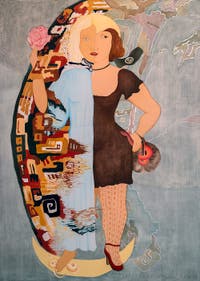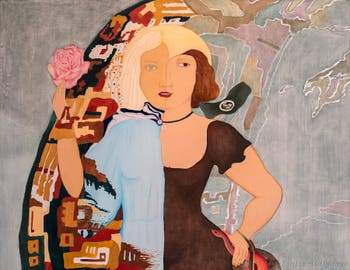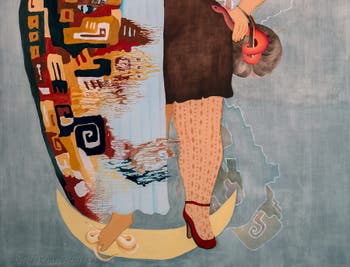Biennale Biennale Art | Architecture
Biennale Art 2024 | 2022 | 2019 | 2017
2022 Artists | Countries | Map Address | Hours Tickets
Artists Accardi | Adams | Altin | Andrade | Asawa | Ayon | Azoulay | Baeza | Bonnet | Cameron | Chaile | Cherri | Correa | Davis | Echakhch | Esbell | Euler | Fadojutimi | Fantin | Feodoroff | Fritsch | Ghebreyesus | Goldshmied Chiari | Goldwasser | Hill | Horra | Hovsepian | Humeau | Humphries | Hwami | Ikeda | Isolotto | Jurgensen | Katz A. | Katz B. | Keresztes | Kim | Knebl Scheirl | Kogelnik | Kudo | Leigh | Lewis | Ukraine | Mirga-Tas | Montes | Mukherjee | Ovartaci | Pachpute | Paulino | Pessoa | Pilotto | Qadiri | Rego | Saint-Phalle | Sara | Sedira | Sillman | Sime | Solar | Sunna | Talbot | Techno | Ursuta | Vicuna | Von Heyl | Wiggen | Zvavahera
Cecilia Vicuna Venice Biennale Art Exhibition
Cecilia Vicuna was born in 1948; she lives and works in New York and Santiago de Chile. Her works are exhibited in the central pavilion of the Biennale at the Giardini.
Cecilia Vicuna “Paro Nacional”
Painting - Oil on paper 1977-1978This picture was painted in Bogota where the military police recruited young peasants and forced them to suppress workers' demonstrations.
During the 1977 national strike, demonstrators responded to the assaults by spreading nails to puncture the tires of police vehicles.
In the centre of this painting, a panther, a buffalo, a jaguar with a red banner, followed by a dancing skeleton and a naked young woman, all flee in front of the weapons pointed at them in the company of a reduced figure of a worker with the face of Lenin.
Strikers are represented as sacred animals being persecuted.
Cecilia Vicuna's paintings are steeped in the indigenous culture of the pre-Columbian era.
The “Leoparda de Ojitos” and “La Comegente” refer to paintings from the 16th century, made by Inca artists forced to convert to Catholicism, paint and worship Spanish holy images.
Cecilia Vicuna “Leoparda de Ojitos”
Painting - Oil on Cotton Canvas 1977The Leopard “lights up what exists”, according to the artist.
She is a feline woman claiming her native culture with her white fur studded with yellow-orange eyes like hers and her clearly visible sex; she is kneeling between two trees, one green and one pink, which she lovingly surrounds with her arms.
Cecilia Vicuna “La Comegente (The People Eater)”
Painting - Oil on Canvas 1971About this painting of an ogress swallowing a succession of human beings while looking quietly at the side of the viewer, Cecilia Vicuna said this:
“I dreamed that I had to devour the bad guys, digest them and defecate them so that my excrement fertilized the earth so that a new civilization could be born.”
Cecilia Vicuna “Llaverito (Blue),”
Painting - Oil on Canvas 2019“I painted the original version of Llaverito in Bogota in 1977. It was a tiny painting that now lives somewhere in Chile, in a relative's home.
At the time, men in Colombia referred to their women as "llaverito", the key holder to all pleasure and joy.
I missed this painting, so I decided to paint a new one, but with the features of an old troublemaker, because I remembered that in Chile, men referred to women as "Ladilla", pestering crab that itches and bothers to no end.
So I decided to paint the liberated Blue Lady in her dual aspect as key holder and crab at once.”
Cecilia Vicuna
Cecilia Vicuna “Martillo y Repollo”
Painting - Oil on Canvas 1973“When it is clear that union is the force, blossoming follows: an idea explodes in all people's minds, the old sky falls apart, and a new sky comes forth for us to live and work the seed.”
Cecilia Vicuna
Cecilia Vicuna “Virgen Puta”
Painting - Oil on Canvas 2021“The Virgen Puta exists in a curvature of space, where she protects misguided women such as me. She is propelled by Pre-Columbian textiles that used to be her UFO, supported by the water snake guardian spirits commanded by the moon.
In Greece, there is an island where the snakes venerate the Virgin and are blessed by people and priests. Let the rule of the moon, the water snakes and the mother prevail.
The Virgin is sacred not for her virginity, but for her mothering.
She knows how to fly and reach the hearts of her devotees, such as me.”
Cecilia Vicuna
Cecilia Vicuna “Bendigame Mamita”
Painting - Oil on Canvas 1977A picture of exile.
At the top are images of a happy life in Chile before the military coup of 1973.
The artist's parents, his birth, his adolescence, his artistic beginnings and the farewells when he left to study in London.
President Allende was overthrown by General Pinochet shortly after the departure of Cecilia, who found herself unable to return to her country.
Cecilia says that Chilean songs are full of lyrics that can be sung at any moment: “Beautiful, beautiful Chile, beautiful like a sun, I leave you behind, with my heart turned into a copihue flower.”
The portrait of the artist's mother with an eye that looks at us through the rosette of her pink guitar is a tribute to her creative vivacity in these tragic circumstances.
Artists Accardi | Adams | Altin | Andrade | Asawa | Ayon | Azoulay | Baeza | Bonnet | Cameron | Chaile | Cherri | Correa | Davis | Echakhch | Esbell | Euler | Fadojutimi | Fantin | Feodoroff | Fritsch | Ghebreyesus | Goldshmied Chiari | Goldwasser | Hill | Horra | Hovsepian | Humeau | Humphries | Hwami | Ikeda | Isolotto | Jurgensen | Katz A. | Katz B. | Keresztes | Kim | Knebl Scheirl | Kogelnik | Kudo | Leigh | Lewis | Ukraine | Mirga-Tas | Montes | Mukherjee | Ovartaci | Pachpute | Paulino | Pessoa | Pilotto | Qadiri | Rego | Saint-Phalle | Sara | Sedira | Sillman | Sime | Solar | Sunna | Talbot | Techno | Ursuta | Vicuna | Von Heyl | Wiggen | Zvavahera
2022 Artists | Countries | Map Address | Hours Tickets
Biennale Art 2024 | 2022 | 2019 | 2017
Biennale Biennale Art | Architecture
Back to Top of Page


